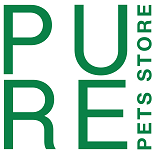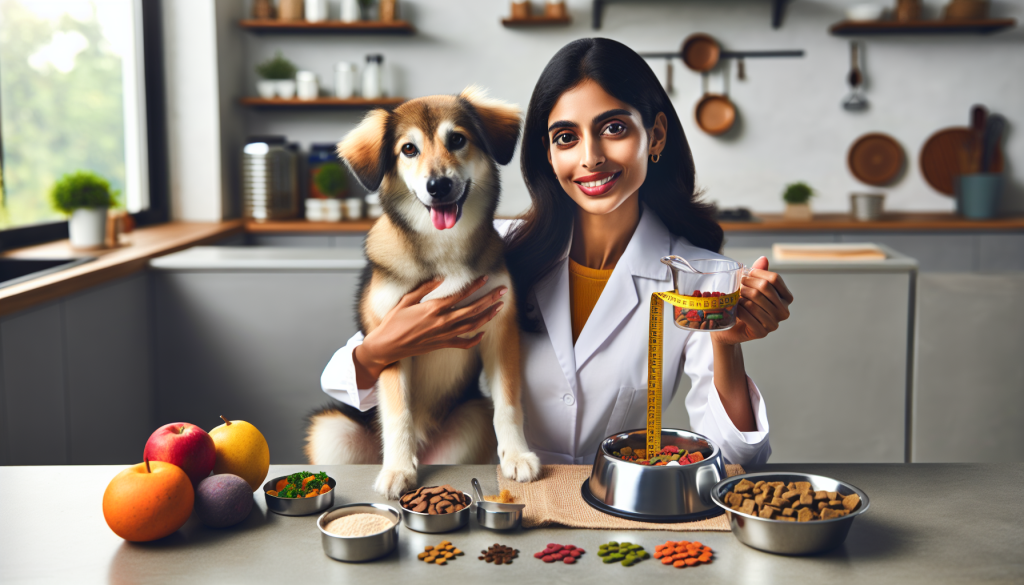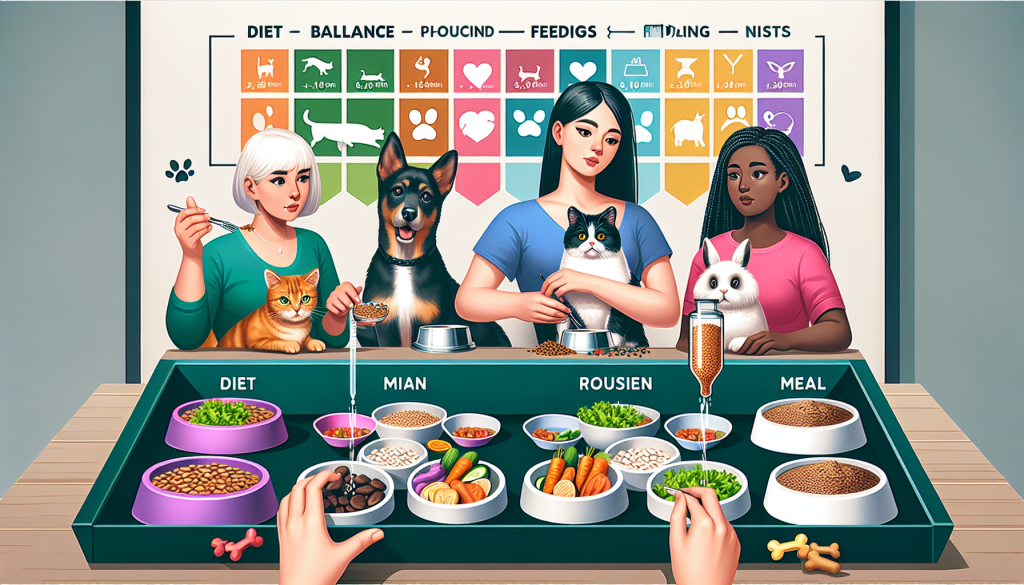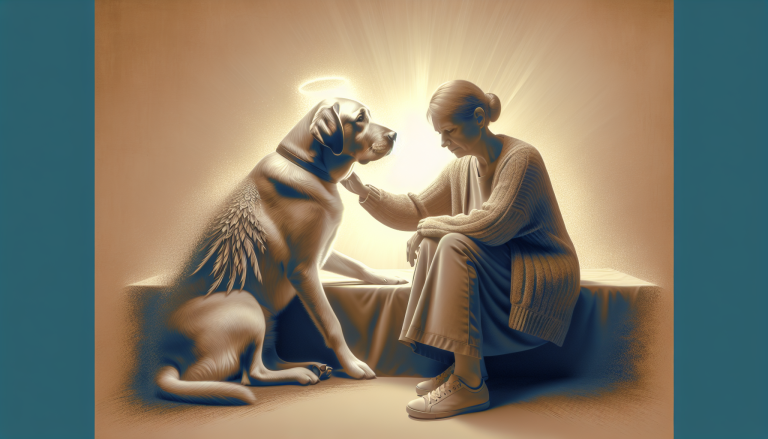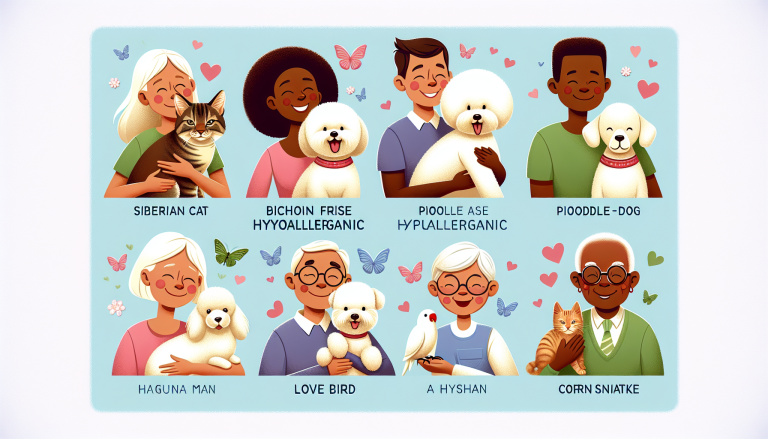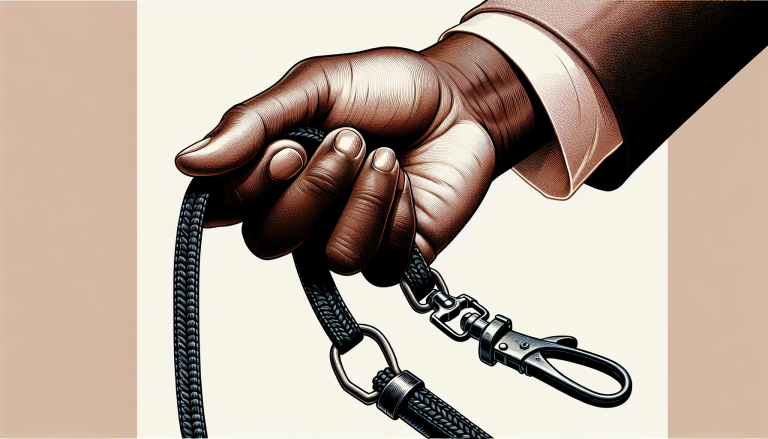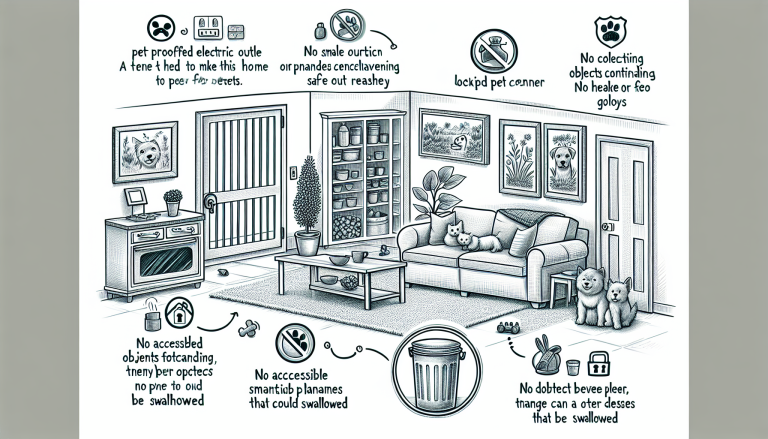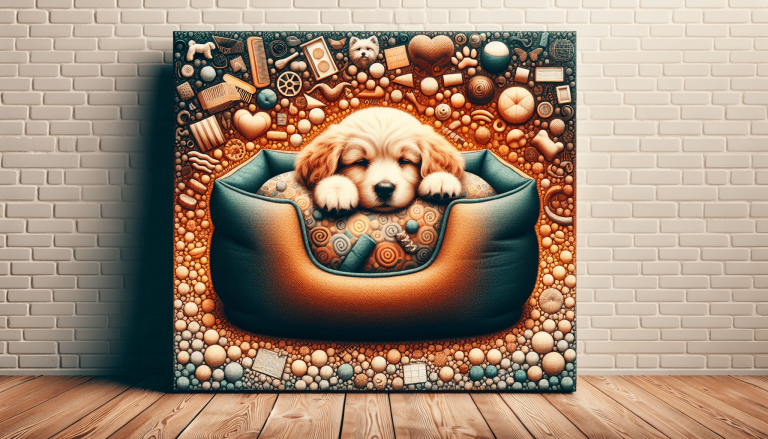Are you looking to give your furry friend the best possible nutrition? Look no further! In this article, you will discover five important tips that will help you keep your pet’s diet balanced and healthy. From choosing the right food to incorporating supplements, we’ve got you covered. Whether you have a playful pup or a cuddly kitty, these tips will ensure that your pet is getting all the nutrients they need to thrive. So, let’s get started on the journey to optimal pet nutrition!
Table of Contents
ToggleChoose the Right Food for Your Pet
Consider Your Pet’s Life Stage
When choosing the right food for your pet, it is essential to consider their life stage. Just like humans, pets have different nutritional needs depending on their age. Puppies and kittens require food that is specifically formulated to support their growth and development, while adult pets need a balanced diet that helps maintain their overall health. Senior pets, on the other hand, may require a diet that supports joint health and addresses age-related issues such as decreased metabolism. By selecting the appropriate food for your pet’s life stage, you can ensure they receive the necessary nutrients to thrive at every stage of their life.
Read the Ingredient List
Reading the ingredient list is crucial when choosing the right food for your pet. The first few ingredients listed on the label are the most significant, as they make up the majority of the food. Look for high-quality protein sources as the main ingredient, such as chicken, beef, or fish. Avoid foods that list vague terms like “meat by-products” or “animal digest,” as these may contain lower-quality protein sources. Additionally, be cautious of foods that contain artificial colors, flavors, and preservatives, as they may not contribute to your pet’s overall health. By reading and understanding the ingredient list, you can make an informed decision and ensure that your pet is receiving a nutritious diet.
Check for Adequate Nutrients
Choosing the right food for your pet also means checking for adequate nutrients. Your pet’s food should provide a balanced combination of proteins, carbohydrates, and fats. Proteins are essential for muscle growth and repair, while carbohydrates provide energy. Fats, when provided in appropriate amounts, contribute to brain health and provide essential fatty acids. Additionally, check if the food has added vitamins and minerals, including calcium for bone health and antioxidants for a strong immune system. By checking the nutrient content, you can be confident that your pet is getting the essential elements they need for optimal health.
Determine the Proper Feeding Portions
Follow the Recommended Guidelines
Determining the proper feeding portions for your pet is crucial to ensure they receive the right amount of food. Most pet food brands provide feeding guidelines on the packaging based on your pet’s weight and life stage. These guidelines give you a starting point for the appropriate amount of food to provide. However, it is important to remember that these are general guidelines and may need to be adjusted based on your pet’s specific needs. Factors such as metabolism, activity level, and age can all influence the ideal portion size. It may be beneficial to consult with your veterinarian to determine the optimal feeding portions for your pet.
Consider Your Pet’s Activity Level
In addition to following the recommended guidelines, it is important to consider your pet’s activity level when determining their feeding portions. Pets with high activity levels, such as active dogs or cats that spend a lot of time outdoors, may require more calories to support their energy needs. On the other hand, sedentary pets or those with medical conditions may require a decrease in calories to maintain a healthy weight. Observe your pet’s energy levels and adjust their feeding portions accordingly to ensure they are receiving the right amount of food to support their activity level.
Monitor Your Pet’s Weight
Monitoring your pet’s weight is essential when determining the proper feeding portions. Regular weigh-ins can help you assess if your pet is maintaining a healthy weight or if adjustments need to be made. An excessive weight gain may indicate overfeeding, while sudden weight loss could be a sign of an underlying health issue or insufficient portion sizes. Consult with your veterinarian if you notice any significant changes in your pet’s weight or body condition, as they can provide guidance on adjusting feeding portions to help your pet maintain a healthy weight.
Establish a Regular Feeding Schedule
Stick to Consistent Meal Times
Establishing a regular feeding schedule is beneficial for your pet’s overall well-being. Feeding your pet at consistent meal times helps regulate their digestive system and prevents overeating. Stick to a schedule that works best for your lifestyle and your pet’s needs. Aim for two to three meals a day for dogs and one to two meals a day for cats. Once you determine the appropriate meal frequency, try to stick to it as closely as possible. Consistency in meal times can also be helpful if your pet requires medication that needs to be administered with their meals.
Avoid Free-Feeding
Free-feeding, or leaving food out all day for your pet to graze on, may lead to overeating and weight gain. For some pets, leaving food available at all times can disrupt their natural hunger cues and result in excessive calorie intake. Instead, it is recommended to provide measured meals at set times throughout the day. This allows you to have better control over their portion sizes and ensure they are receiving the appropriate amount of food for their needs.
Adjust the Schedule as Needed
Your pet’s feeding schedule may need to be adjusted based on their specific circumstances. For example, if you have a working dog that requires a lot of energy during the day, you may need to provide an additional meal or a larger portion to accommodate their needs. Similarly, if your cat prefers smaller, more frequent meals, you can adjust their meal schedule accordingly. Pay attention to your pet’s behavior and adjust their feeding schedule as needed to ensure they are satisfied and receiving the necessary nourishment.
Provide Fresh Water at All Times
Change the Water Daily
Ensuring that your pet has access to fresh water at all times is vital for their health and well-being. Water is essential for hydration and helps support various physiological functions in your pet’s body. Make it a habit to change your pet’s water daily to ensure cleanliness and freshness. Stagnant water can accumulate bacteria and may not be appealing to your pet. By providing fresh water daily, you help encourage your pet to drink an adequate amount to stay hydrated throughout the day.
Ensure Multiple Water Stations
If you have a large house or multiple pets, it is beneficial to provide multiple water stations. This ensures that your pet can easily access water regardless of where they are in the house. Place water bowls in different areas, such as the kitchen, living room, or any other frequently visited spots by your pet. This makes it convenient for them to quench their thirst without having to search for water. Additionally, having multiple water stations can prevent food guarding behavior between pets, as each pet will have their own separate water source.
Consider Pet-Safe Water Fountains
Pet-safe water fountains can be a great addition to your pet’s water source. Some pets are attracted to moving water, and a water fountain can encourage them to drink more. These fountains have filters that help remove impurities and keep the water fresh. The flowing water also inhibits the growth of bacteria, making it a more hygienic option compared to stagnant water bowls. Pet-safe water fountains come in different sizes and designs, allowing you to choose the one that best suits your pet’s needs.
Avoid Harmful Foods and Ingredients
Be Aware of Toxic Foods
It is crucial to be aware of toxic foods that can be harmful to your pet. Certain foods that are safe for humans can be toxic to pets, causing symptoms ranging from mild gastrointestinal upset to severe illness or even death. Some common toxic foods for pets include chocolate, grapes, onions, and garlic. Keep these foods out of your pet’s reach and ensure that they are not included in their diet. If you suspect that your pet has ingested a toxic food, contact your veterinarian immediately.
Keep Chocolate and Caffeine Away from Pets
Chocolate and caffeine are two specific substances that you should always keep away from your pets. These items contain theobromine and caffeine, which can be toxic to animals. Ingesting chocolate or caffeinated products can have serious consequences for your pet’s health, including rapid heart rate, tremors, seizures, and even death. Ensure that all chocolate and caffeinated products are securely stored and not accessible to your pet. If you suspect your pet has ingested these substances, seek veterinary care as soon as possible.
Avoid Artificial Sweeteners
Artificial sweeteners, such as xylitol, can be extremely dangerous for pets. Xylitol is commonly found in sugar-free gum, candies, and other food products. Ingesting xylitol can cause a sudden release of insulin in dogs, leading to a rapid drop in blood sugar levels. This can result in seizures, liver failure, and even death. It is crucial to read ingredient labels carefully and avoid offering any products containing artificial sweeteners to your pets. If you suspect your pet has consumed a product containing xylitol, seek immediate veterinary care.
Consider Individual Dietary Needs
Consult with Your Veterinarian
Every pet is unique, and their dietary needs may vary. Consulting with your veterinarian is essential to determine the specific dietary requirements of your pet. They can provide guidance and recommend a diet that is tailored to your pet’s individual needs. If your pet has any underlying health conditions or specific dietary restrictions, your veterinarian can help you navigate the appropriate food choices. Regular check-ups with your veterinarian will ensure that your pet’s dietary needs are being met as they grow and develop.
Account for Allergies and Sensitivities
Pets, just like humans, can have allergies and sensitivities to certain foods. Food allergies often present with symptoms such as itching, gastrointestinal upset, or ear infections. If you suspect your pet has food allergies or sensitivities, your veterinarian can help conduct tests to identify the specific allergens. Once identified, your veterinarian can guide you in selecting a diet that eliminates the allergens and suits your pet’s nutritional needs. It is essential to avoid feeding your pet any foods that they are allergic to, as continued exposure can worsen their symptoms and lead to long-term health issues.
Factor in Breed and Size
The breed and size of your pet can also influence their dietary needs. Certain breeds are prone to specific health conditions that may require dietary adjustments. Large breed dogs, for example, may require a diet that supports healthy joint development, while small breed dogs may benefit from smaller kibble sizes to accommodate their smaller mouths. Your veterinarian can provide tailored advice based on your pet’s breed and size to ensure they receive the appropriate nutrients to support their specific needs.
Incorporate Nutritious Treats Sparingly
Choose Healthy Treat Options
While treats can be a great way to reward your pet and strengthen the bond between you, it is important to choose healthy options. Look for treats that are made with high-quality ingredients and provide additional nutritional benefits. Treats that are rich in protein and made from natural ingredients are excellent choices. Avoid treats that are high in preservatives, artificial flavors, and excessive sugars, as they may contribute to weight gain or other health issues. Incorporating nutritious treats sparingly ensures that your pet can enjoy them without compromising their overall diet.
Watch the Calorie Intake
It is important to watch your pet’s calorie intake, even when it comes to treats. Treats should only make up a small portion of your pet’s daily caloric intake to avoid excessive weight gain. Each treat should be considered as part of their overall diet, and the calories should be accounted for. Check the packaging for calorie information or consult with your veterinarian for guidance on appropriate treat portions. By monitoring the calorie intake from treats, you can help maintain your pet’s healthy weight and overall well-being.
Use Treats for Training and Bonding
In addition to being a delicious snack, treats can be used for training and building a strong bond with your pet. Positive reinforcement training methods often utilize treats as rewards for desired behaviors. Treats can also be used to create enjoyable and bonding experiences with your pet, such as puzzle toys or interactive feeding games. By using treats strategically, you can effectively train your pet and strengthen your relationship with them.
Monitor and Evaluate Your Pet’s Health
Watch for Allergic Reactions or Digestive Issues
While ensuring proper nutrition for your pet, it is essential to monitor their health and watch for any allergic reactions or digestive issues. Some pets may develop food allergies or sensitivities over time, even if they have been eating the same food for a while. Keep an eye out for symptoms such as itching, vomiting, diarrhea, or changes in appetite. These can be indications of an adverse reaction to a specific ingredient in their diet. If you notice any concerning signs, consult with your veterinarian to determine the cause and identify an appropriate solution.
Assess Coat Condition and Energy Levels
Your pet’s coat condition and energy levels can also provide insights into their overall health and the effectiveness of their diet. A healthy coat should be shiny, smooth, and free from excessive dandruff or hair loss. If your pet’s coat becomes dull, dry, or shows signs of poor health, it may indicate a nutritional deficiency. Additionally, energy levels should be appropriate for your pet’s age and breed. If your pet seems lethargic or lacks energy, it may be worth exploring their diet and considering adjustments if necessary. Regular monitoring of their coat condition and energy levels can help identify any potential issues early on.
Schedule Regular Veterinary Check-Ups
Regular veterinary check-ups are crucial for monitoring your pet’s health and ensuring their nutritional needs are being met. Your veterinarian can perform thorough examinations, including assessing their body condition, listening to their heart and lungs, and addressing any concerns you may have. Regular check-ups allow your veterinarian to detect any health issues early on and make dietary recommendations or adjustments as necessary. By staying on top of your pet’s health and nutrition with regular vet visits, you can help ensure they live a long and healthy life.
Understand the Importance of Balanced Diets
Ensure a Proper Balance of Proteins, Carbohydrates, and Fats
A balanced diet is essential for your pet’s overall health and well-being. Ensure that their diet includes a proper balance of proteins, carbohydrates, and fats. Proteins provide the building blocks for muscle growth and repair, and they are essential for optimal health. Carbohydrates provide energy, and they should come from high-quality sources such as whole grains or vegetables. Fats play a crucial role in brain health and provide essential fatty acids. The right balance of these macronutrients ensures that your pet receives the necessary nutrients for growth, development, and maintenance.
Consider the Role of Vitamins and Minerals
In addition to the macronutrients, vitamins and minerals play a vital role in your pet’s diet. These micronutrients are necessary for various physiological functions, including immune system support, bone health, and overall vitality. Look for pet foods that include added vitamins and minerals to ensure your pet receives a well-rounded diet. If you have any concerns about specific nutrients, consult with your veterinarian for guidance on appropriate supplementation or dietary adjustments.
Avoid Excessive or Imbalanced Feeding
While it is essential to provide a balanced diet, it is equally important to avoid excessive or imbalanced feeding. Overfeeding your pet can lead to obesity and related health issues, while underfeeding can result in malnutrition and stunted growth. Follow the recommended feeding guidelines provided by your pet’s food manufacturer, and adjust portion sizes based on your pet’s individual needs. Avoid adding unnecessary supplements or excessively altering their diet without consulting with your veterinarian. A balanced diet in appropriate portions will ensure your pet receives the optimal nutrition they need to thrive.
Stay Consistent with Your Pet’s Diet
Introduce Changes Gradually
When making any changes to your pet’s diet, it is important to introduce them gradually. Sudden dietary changes can lead to digestive upset such as diarrhea or vomiting. Slowly transition your pet to the new food by mixing a small amount of the new food with their current food, gradually increasing the ratio over time. This gradual transition allows the digestive system to adapt to the changes, minimizing the risk of digestive issues. If you are considering switching your pet’s diet, consult with your veterinarian for guidance on the best way to make the transition for your specific pet.
Maintain Consistency in Food Brands
Maintaining consistency in food brands can also be beneficial for your pet’s digestive health. Frequent changes in food brands or flavors can disrupt their digestive system and lead to gastrointestinal upset. Once you find a high-quality food that meets your pet’s nutritional needs, try to stick with it to provide a consistent and stable diet. If you do need to make changes in the future, aim to make them gradually, as mentioned earlier, to ensure a smooth transition.
Avoid Frequent Diet Switches
While it can be tempting to try new and different diets for your pet, frequent diet switches may not be in their best interest. Consistency in their diet allows their digestive system to adapt and ensures that they are receiving a consistent balance of nutrients. Unless there is a specific dietary concern or your veterinarian recommends a change, it is generally best to stick with a diet that works well for your pet. If you do have concerns or are considering a diet switch, consult with your veterinarian for their professional advice.
In conclusion, choosing the right food for your pet is crucial for their overall health and well-being. Consider their life stage, read ingredient lists, and ensure they receive adequate nutrients. Determine the proper feeding portions by following recommended guidelines, taking into account their activity level, and monitoring their weight. Establishing a regular feeding schedule, providing fresh water, and avoiding harmful foods are all important aspects of pet nutrition. Consider your pet’s individual dietary needs and incorporate nutritious treats sparingly. Monitor and evaluate your pet’s health, understand the importance of balanced diets, and stay consistent with their diet. By following these tips, you can help ensure that your pet receives the best nutrition possible to live a long and healthy life.
